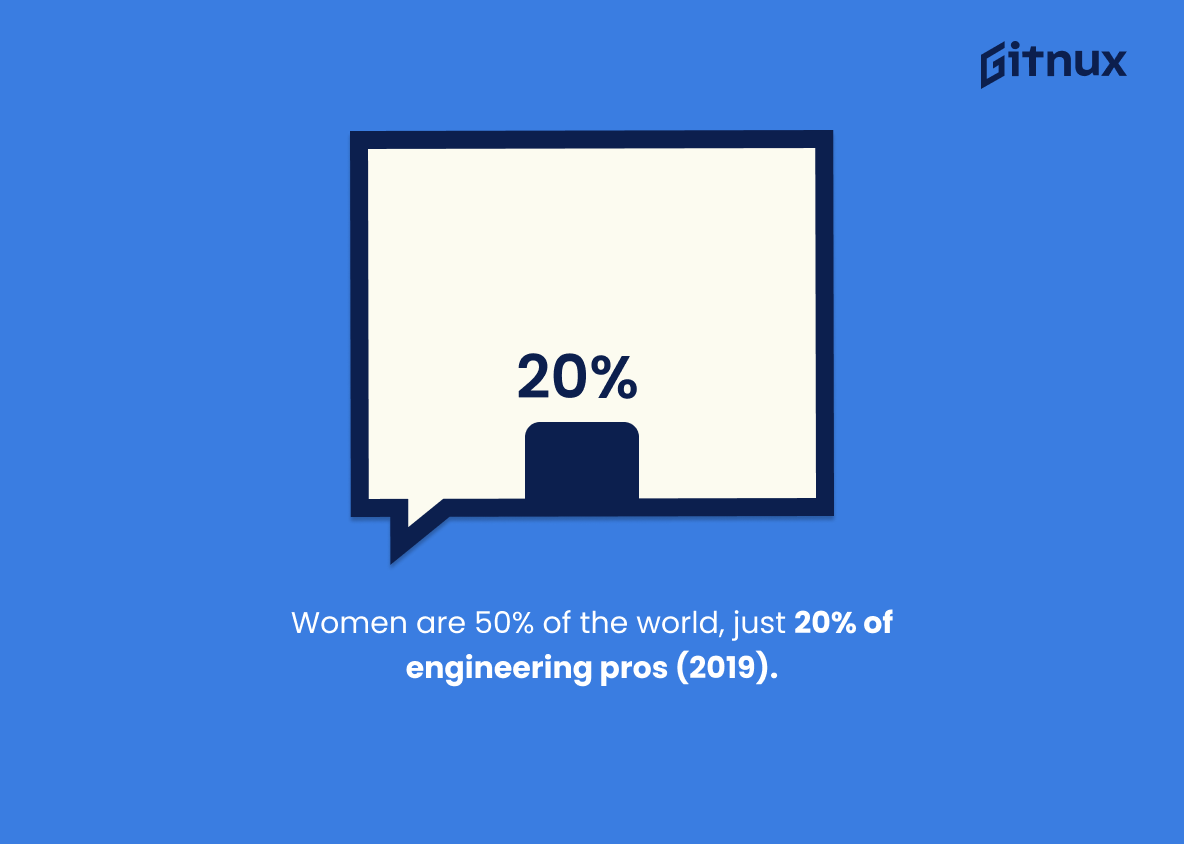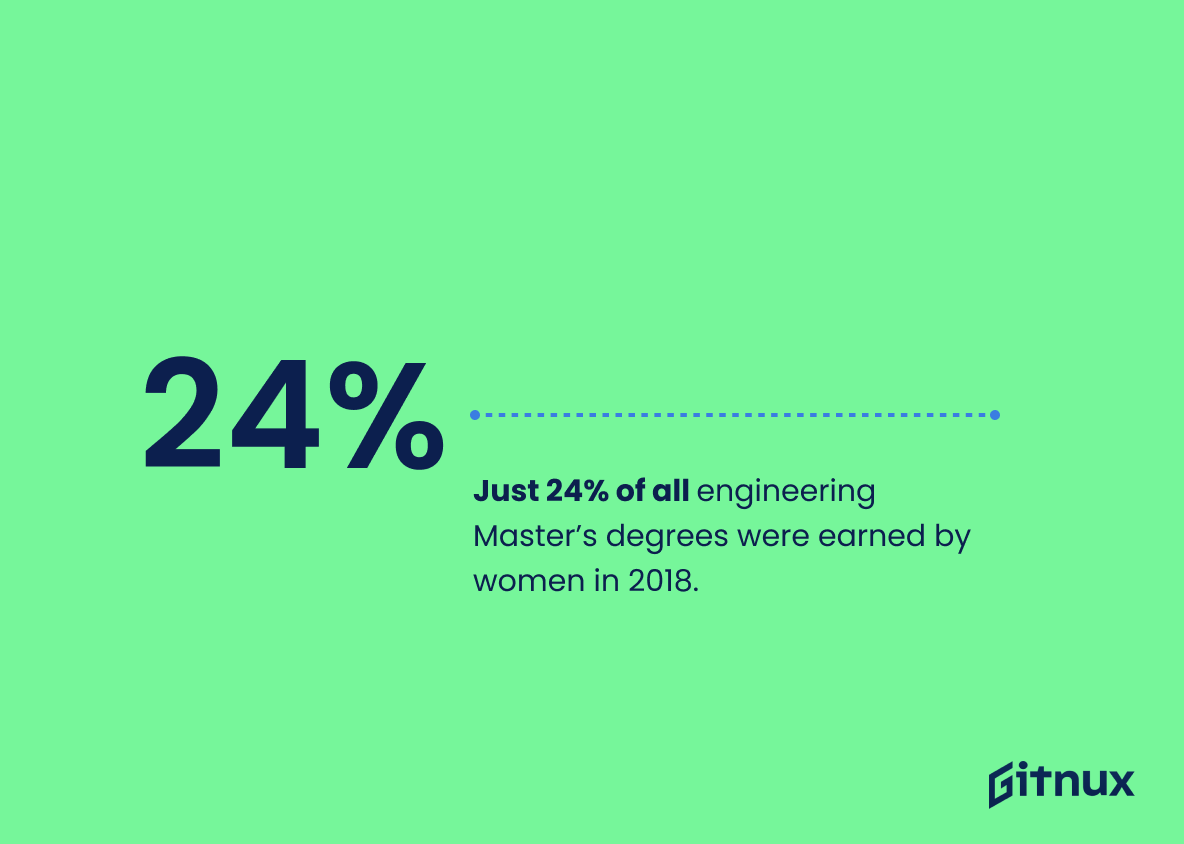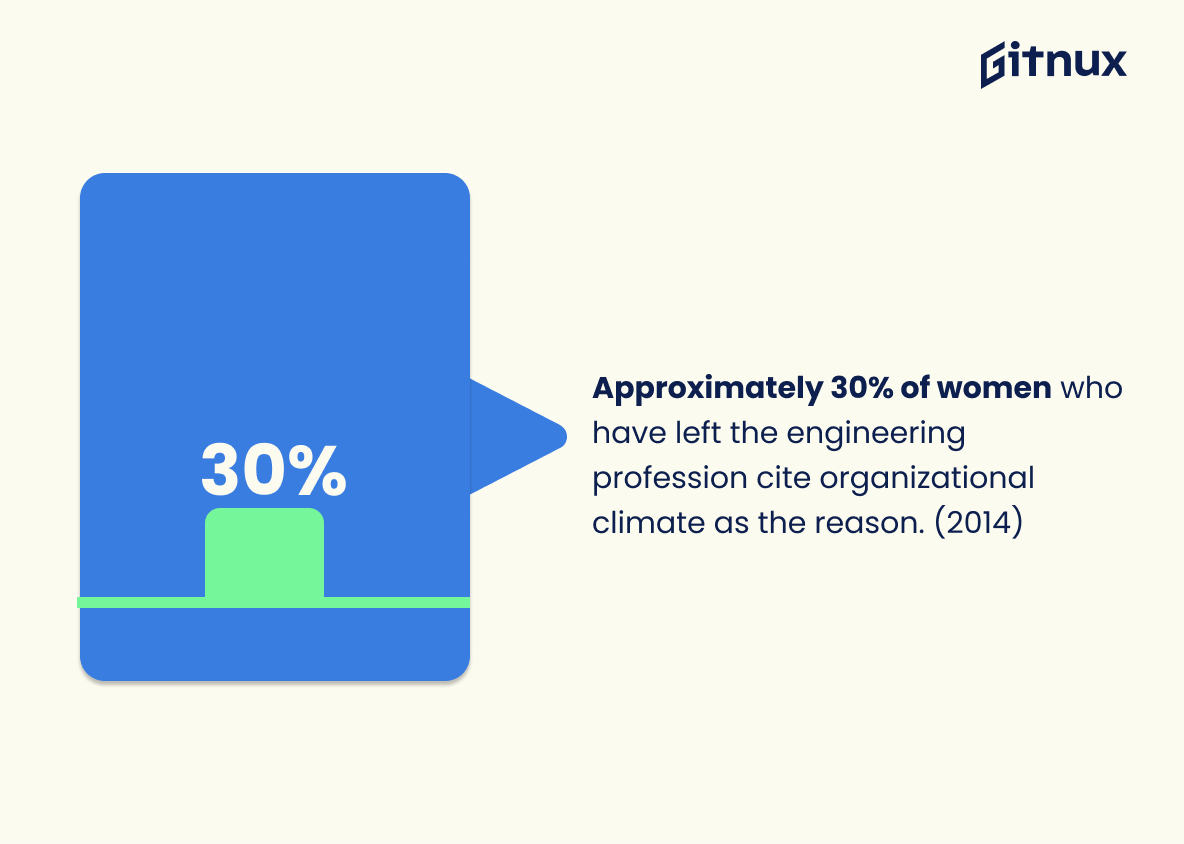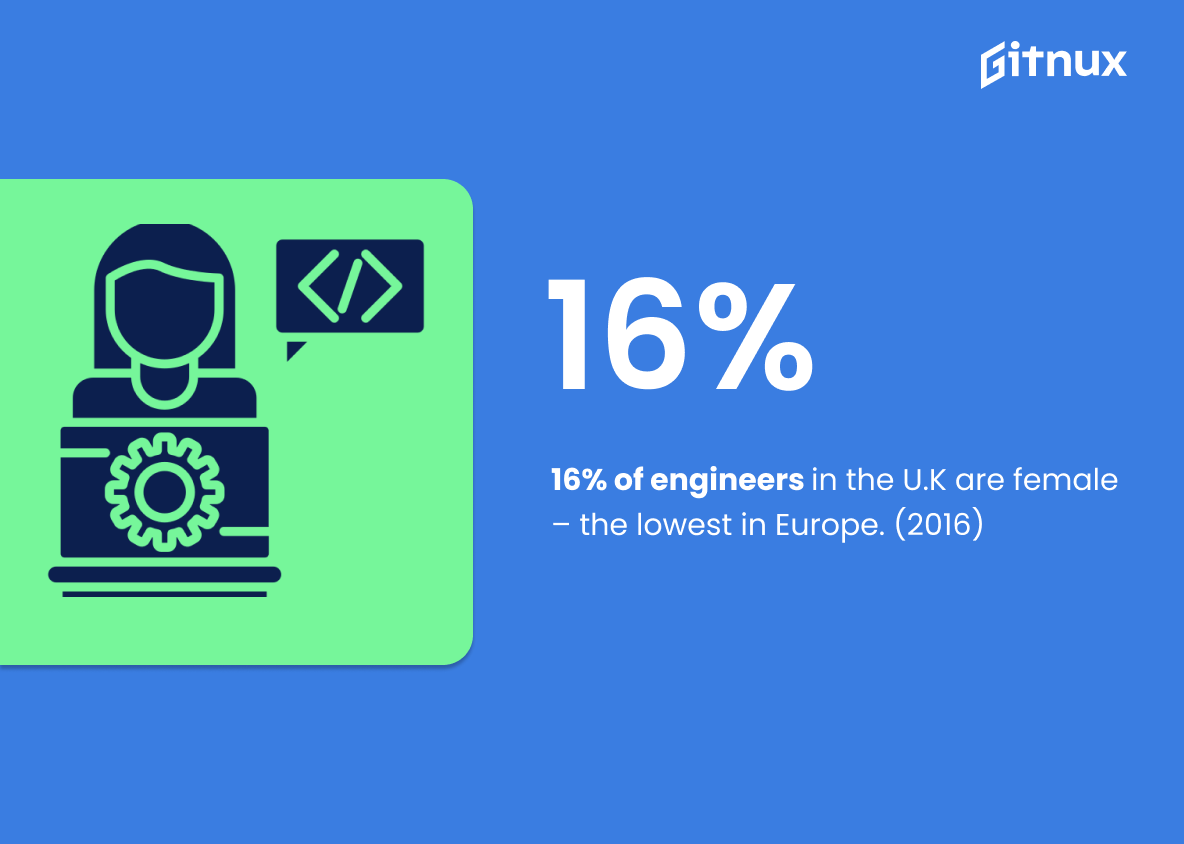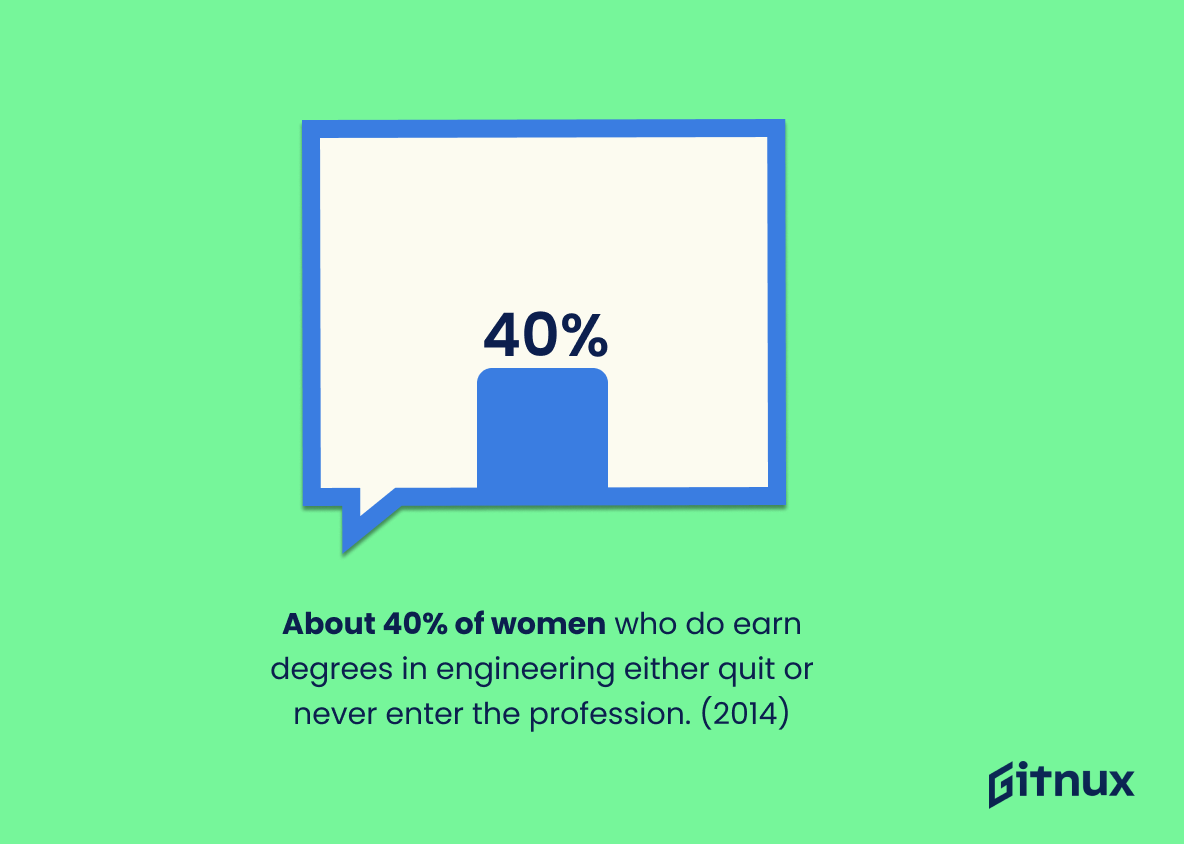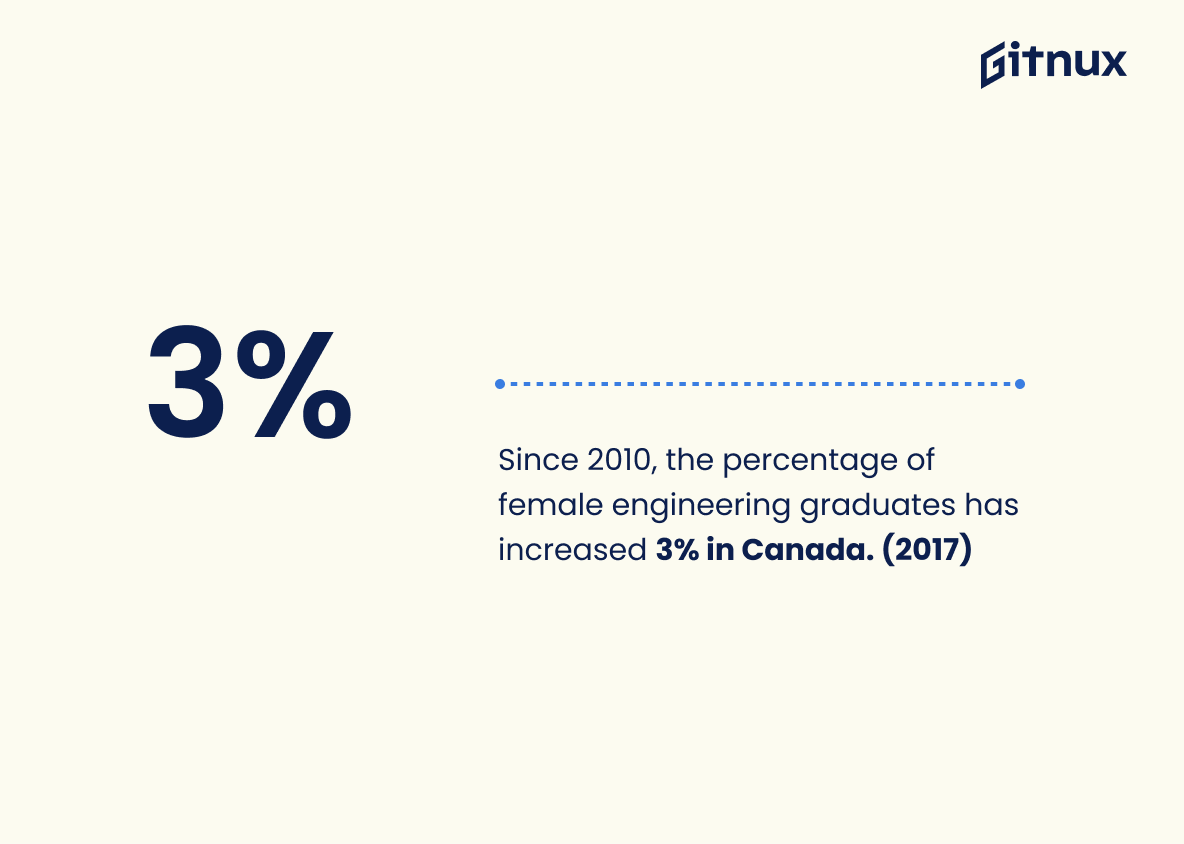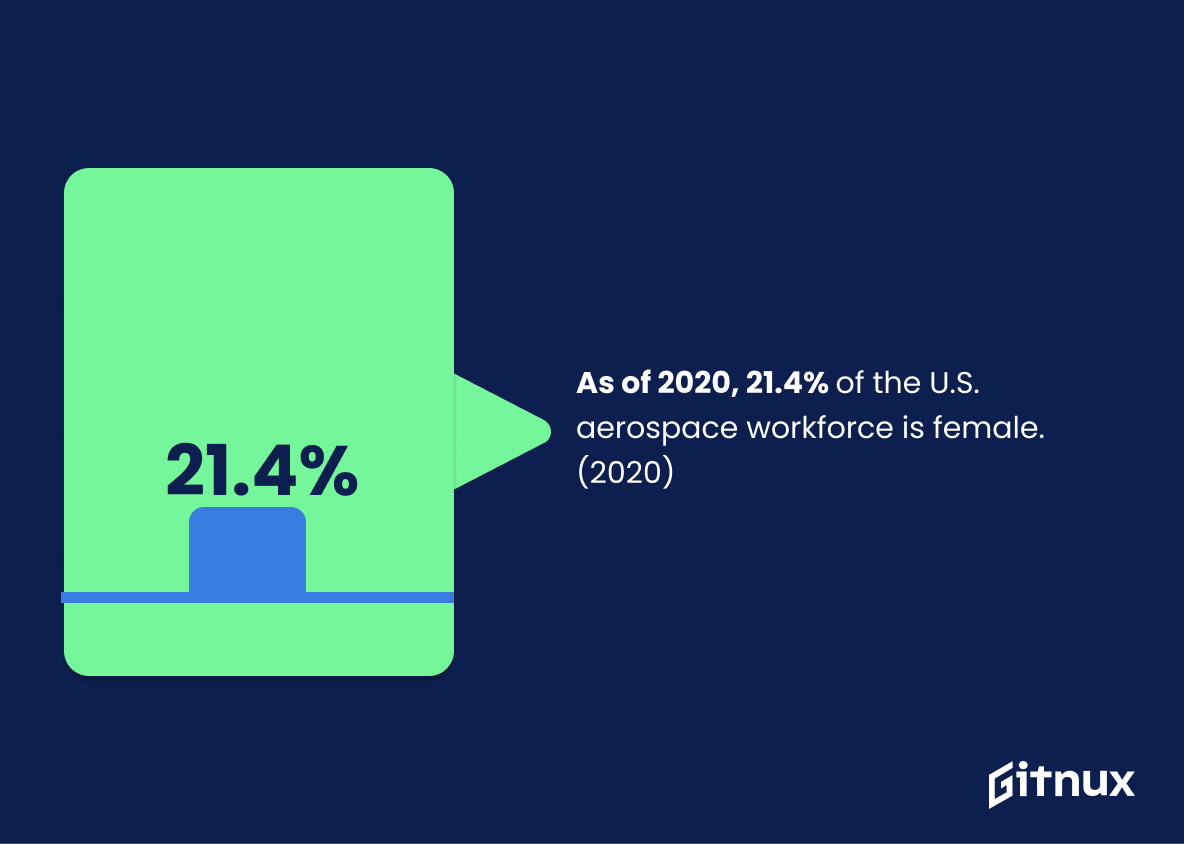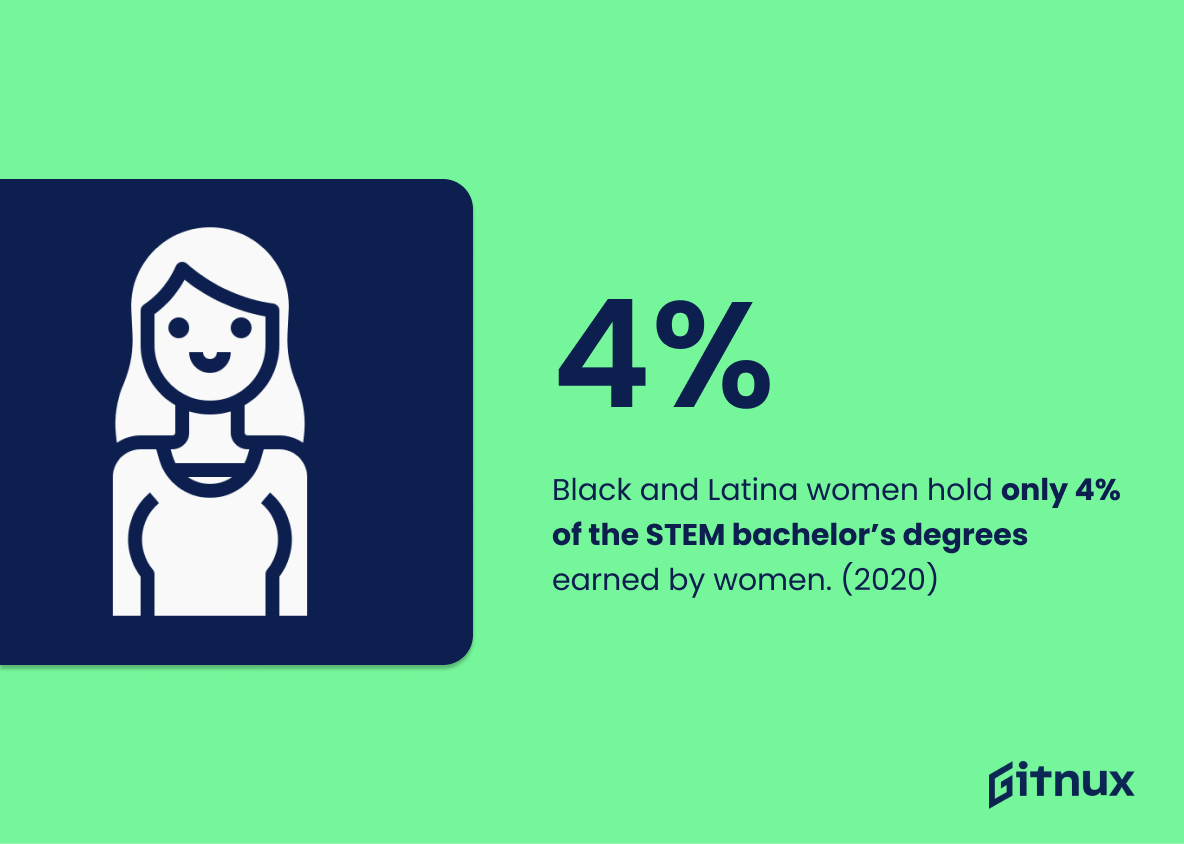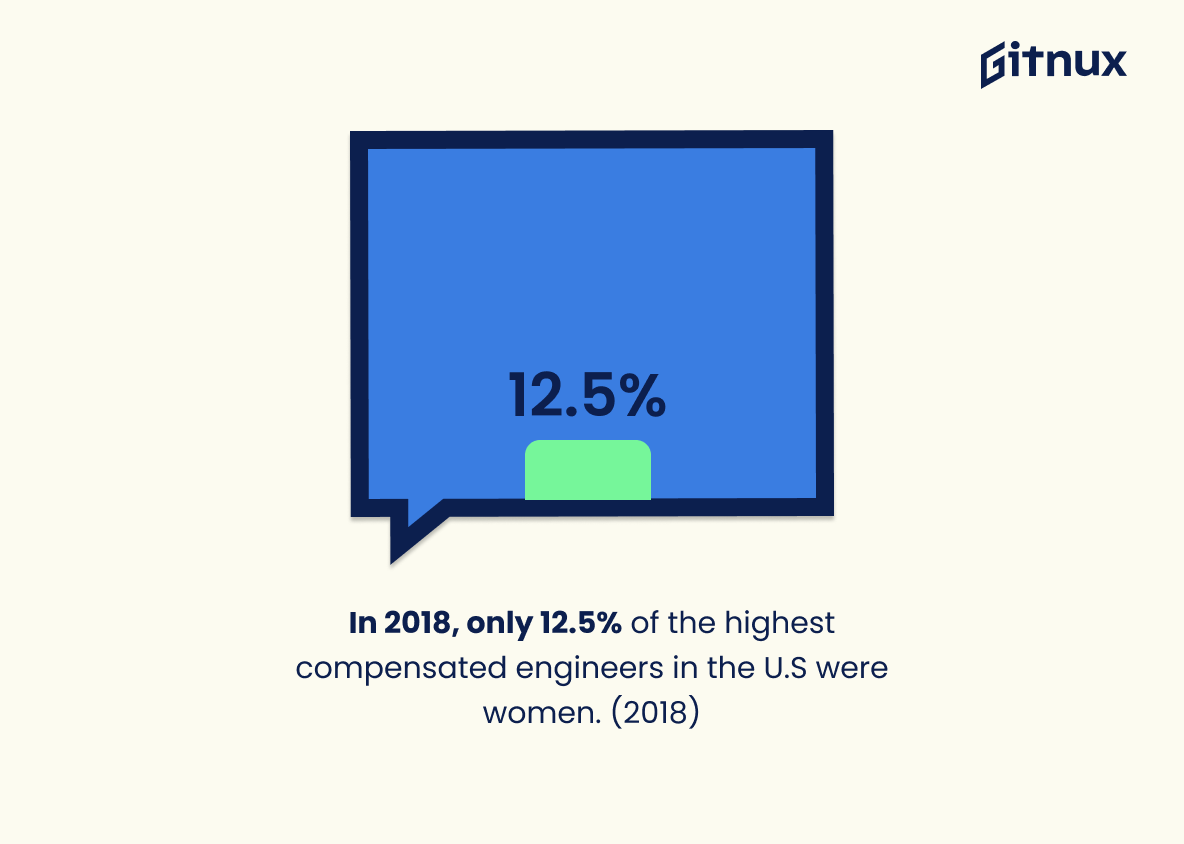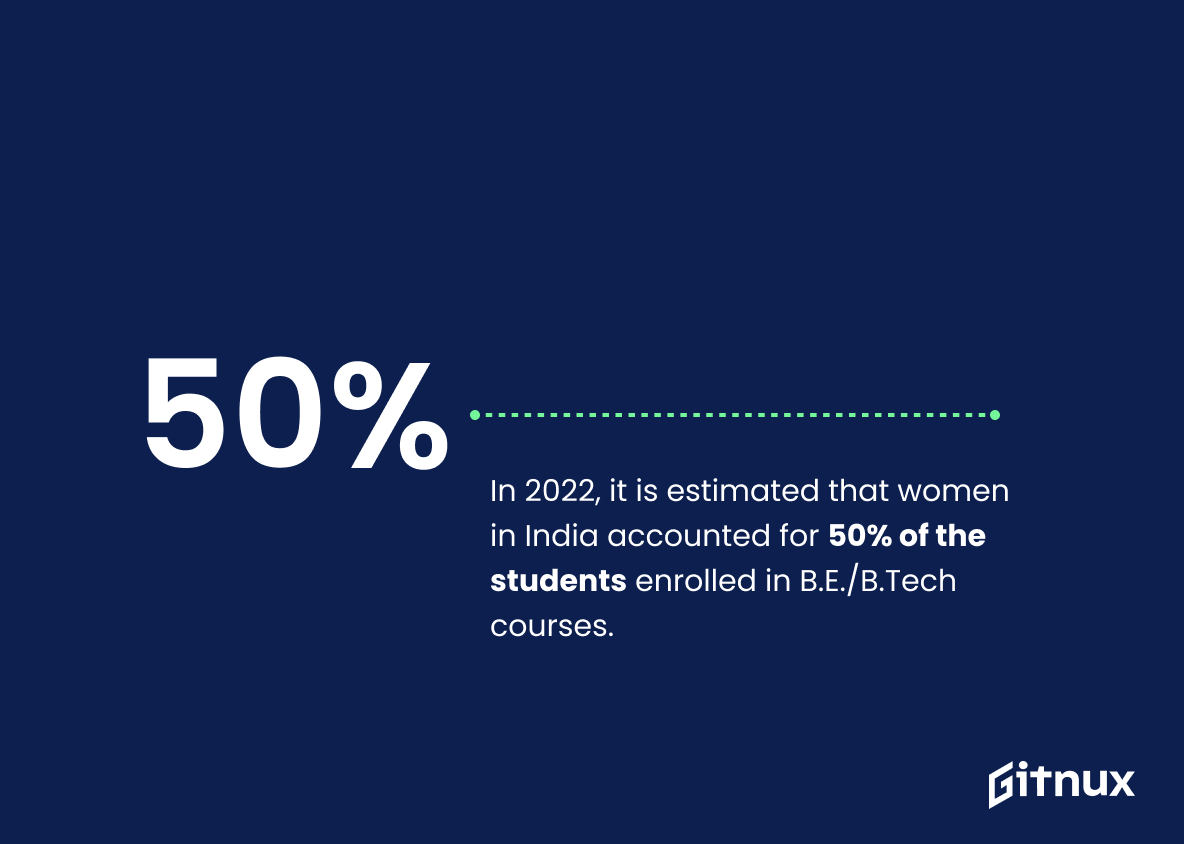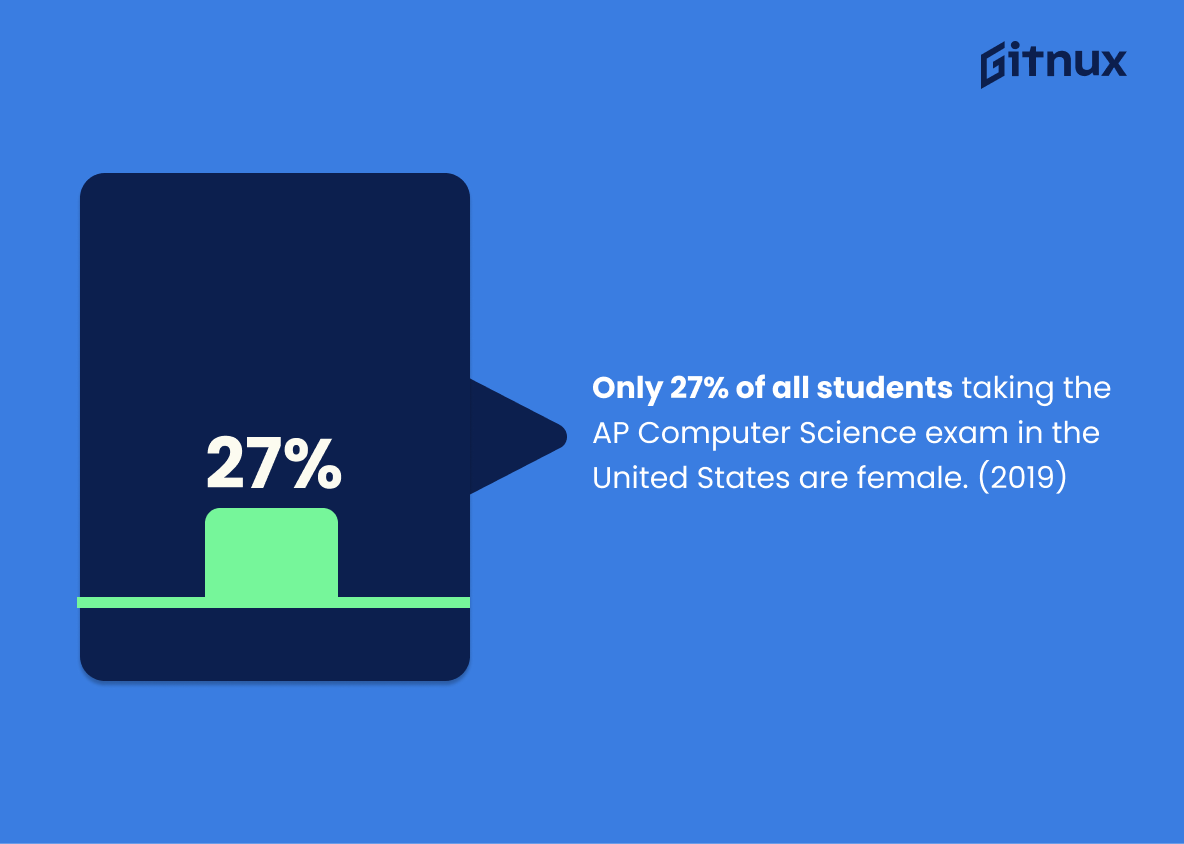Delve into the riveting world of engineering and you’ll quickly discover that it’s not merely a male-dominated field. This rapidly evolving industry also boasts a commendable array of remarkably talented women. This blog post shines a spotlight on Women in Engineering, unravelling revealing statistics, shedding light on persisting challenges and celebrating audacious breakthroughs. Join us as we navigate through this comprehensive dossier, exploring the formidable presence, progress and potential of women in the exciting realm of engineering.
The Latest Women In Engineering Statistics Unveiled
Only 13% of engineers are women. (2019)
Shining a spotlight on the 2019 figure that a mere 13% of engineers are women underscores the palpable gender disparity in the engineering field. This numerical evidence serves as a stark reality check for those reading the blog post on Women In Engineering Statistics, illuminating the ongoing challenges women face when navigating a male-dominated industry. Hence, this stat should be seen not only as a percentage, but as a call to action for organizations and institutions to generate more inclusive opportunities for aspiring and current female engineers. Collectively, hauling this uneven terrain into the 21st century by shifting this imbalance will not only enrich the field with diversity, but can catalyze innovation and progress.
Women constitute 50% of the world’s population but only 20% of the professional engineering workforce. (2019)
Navigating through the labyrinth of the world’s demographics reveals a striking paradox: Women, representing half of the world’s inhabitants, feature as a scanty 20% fragment in the professional engineering workforce. The magnitude of this contrast imparts a vibrant voice to the under-representation of women in engineering fields.
Within a blog post laying out Women in Engineering Statistics, nuances of this particular statistic could add myriad shades to our understanding. It can act as an infographic beacon, illuminating the profound gaps that exist, and torchbearing the way for discussions about potential causes – ranging from gender biases and stereotypes, to workplace environments and STEM education.
This statistic also carries weight, capable of stirring not only awareness, but inciting thirst for change. It thrusts focus upon the need for increased feminine perspectives, innovative ideas, and problem-solving approaches, which could lead to more comprehensive, diversified solutions in engineering – a field that shapes our daily lives.
As such, this statistical silhouette is not just a number—it’s a call to action, beckoning for equality, diversity, opportunity, and enlightenment within the engineering workforce.
Just 24% of all engineering Master’s degrees were earned by women in 2018.
Highlighting the stark figure of 24% illuminates the gender disparity within the realm of advanced engineering education. In the context of a blog post about Women in Engineering Statistics, it constructs a compelling narrative of underrepresentation. This statistic whispers a tale of a journey half-travelled: a battlefield where the intellect and determination of women are making inroads, yet continue to face formidable gender-based barriers. It serves as a spotlight, showing that while we have moved beyond the times when gender dictated academic pursuits, the destination of parity still eludes us. It underscores the urgency for society, academia, and industry to amplify their efforts in welcoming more women into the engineering fold, a mission of vital importance if we are to fully harness the untapped female talent in this field.
Approximately 30% of women who have left the engineering profession cite organizational climate as the reason. (2014)
An examination of the vibrant tapestry of Women in Engineering Statistics reveals a significant thread: A startling 30% of women who have bid farewell to the engineering profession point to the ‘organizational climate’ as the crux of their departure in 2014. This unveils a crucial perspective that challenges us to reflect intensely about the workplace environment in question. Not only does this statistic underpin the importance of a conducive, equitable and inclusive environment in holding the interest and retaining talented women engineers, it also catapults organizational culture to the forefront of conversations on women retention in engineering. Thus, unraveling this statistic is paramount to illuminating solutions and fashioning a better career landscape for female engineers.
Out of every 25 female graduate students, only three chose to specialize in engineering and technology. (2019)
Painting an expressive picture of the challenges women face in engineering and technology fields, the revealed statistic spotlights a stark reality — a mere three out of every 25 female graduate students elected this path of specialization in 2019. This compelling data view exposes the glaring scarcity of women choosing to forge their careers within these sectors. In writing about Women In Engineering Statistics, it serves as a striking starting point for discussions, providing tangible and sobering evidence of the stark gender disparities in these professional realms. As such, this stat highlights the need for strategies to encourage more women to pursue studies, and by extension careers, within these traditionally male-dominated fields. It also invokes further intrigue into the factors contributing to such decisions, which might include societal perceptions, lack of role models, or potential biases. Therefore, underlining this statistic is akin to holding a mirror up to the situation, forcing us to confront the reality and act accordingly for positive change.
16% of engineers in the U.K are female – the lowest in Europe. (2016)
Painting a striking picture of gender disparities in the engineering field, the fact that a mere 16% of engineers in the U.K. are female, the lowest rate in Europe as of 2016, serves as a stark reminder of the hurdles women continue to face in this realm. This data point, embedded in the heart of any discourse on Women in Engineering Statistics, essentially underscores the pressing need for active, targeted interventions aimed at enhancing female representation in engineering — a traditionally male-dominated domain. It is more than just a statistic; it’s a rallying call for industry stakeholders, educational institutions, and policy-makers to intensify their commitment to gender diversity, assemble comprehensive strategies and inculcate a work culture conducive to women’s participation and success in engineering.
About 40% of women who do earn degrees in engineering either quit or never enter the profession. (2014)
Highlighting the statistic that nearly 40% of women who obtain degrees in engineering either quit or never enter the field, casts a spotlight on the steep gender disparities within this profession. It rings an alarm bell about the necessity to investigate and perhaps modify the profession’s culture and working conditions. Displaying such a number makes it not just a silent fact, but a loud cry for action to create more inclusive and appealing opportunities in engineering for women. This emphasizes the ongoing struggle to achieve gender equality in engineering and serves as an inspiration to instigate change. The essence of revealing this data is to ignite a discussion on how to reduce this percentage and empower more women to continue within the engineering profession post-graduation.
Since 2010, the percentage of female engineering graduates has increased 3% in Canada. (2017)
Witnessing a 3% uptick in the proportion of female engineering graduates in Canada since 2010 forms an integral beam in the bridge, overcoming gender disparity in engineering. This numerical testimony not only illuminates the path treaded by unwavering, persistent women challenging societal stereotypes since 2010 but also encapsulates the changing societal attitudes towards female participation in Engineering. This positive incline within a span of seven years in a historically male-dominated field, like Engineering, confidently tramples the dated ideology questioning women’s prowess in technical fields. Moreover, it vividly sketches the potential blueprint of our future, where more women making their foray into engineering promises innovation fueled by diverse perspectives and enhanced problem-solving approaches. Therefore, this upward trend firmly plasters another brick in the citadel that is gender equality in Engineering.
As of 2020, 21.4% of the U.S. aerospace workforce is female. (2020)
In the panorama of Women in Engineering statistics, the fact that as of 2020, 21.4% of the U.S. aerospace workforce is comprised of females cannot be overlooked. This percentage serves as a crucial compass, providing directions on the road towards gender equality in engineering fields. It not only marks the progress made so far but paints a challenging yet promising picture of a traditionally male-dominated sector breaking barriers. It is a testament to the strides aerospace has made in welcoming more female talent aboard, while also showcasing how much further the journey to parity extends. Furthermore, this information underlines the imperative discourse about the need to continually inspire, encourage and support more women to shoot for the stars, quite literally, by choosing careers in aerospace engineering.
Only 7% of U.S. Patents in 2019 were awarded to solely female inventors. (2019)
To truly grasp the gender disparity in the field of engineering, one doesn’t need to look any further than the sheer numerical evidence of U.S Patent awards in 2019. A striking illustration emerges when you consider the tiny proportion – a mere 7% – of these patents that were granted to exclusively female inventors. This figure serves as both a glaring light on the reality of underrepresentation, and a powerful challenge to magnify the visibility and contribution of women in the sector. With every statistic, we continue to stitch together the real snapshot of the engineering world. This modest 7% is certainly a critical thread in the grand tapestry of Women In Engineering Statistics, underscoring not just the current state of play but highlighting the areas where balance, fairness, and gender inclusivity still need to be vigorously championed.
Black and Latina women hold only 4% of the STEM bachelor’s degrees earned by women. (2020)
Scrutinizing at the statistic which suggests black and Latina women hold a mere 4% of the STEM bachelor’s degrees earned by women maps out a critical demographic tableau in the engineering landscape. Evidently, it emphasizes an impending racial and gender disparity within the field, silently begging for amends. Casting light on such a phenomenon within a blog post about women in engineering enforces the need for encouraging and supporting underrepresented groups, amplifying their roles and participation in the STEM fields. A more vibrant diversity within the engineering profession could not only spark more comprehensive solutions to intricate problems, but also foster a more inclusive, innovative field that mirrors our diverse world.
In 2018, only 12.5% of the highest compensated engineers in the U.S were women. (2018)
Painting the panorama of gender disparity in the world of engineering, the stat that illustrates that merely 12.5% of the highest compensated engineers in the U.S. were women in 2018 lends a significant splash of reality to this canvas. This figure not only offers a poignant glimpse into the cavernous gender wage gap that prevails in this profession, but also subtly reveals the mountainous challenge women engineers face in climbing the salary ladder. Evoking a call for change, this numeric insight is thus quintessential to challenge perceptions, stimulate conversations, and strengthen advocacy for equality in this field. Any blog post focusing on Women in Engineering Statistics would arguably be incomplete without it as it creates a concrete backdrop for countering gender disparity.
In 2022, it is estimated that women in India accounted for 50% of the students enrolled in B.E./B.Tech courses.
Highlighting the estimation that women in India constituted half of the B.E./B.Tech enrolments in 2022 paints a vibrant picture of progress and equality in the field of engineering. It provides meaningful evidence of the burgeoning female participation in a domain traditionally dominated by males, challenging stereotypical norms and transforming the landscape of engineering education. Furthermore, it underscores the fact that efforts aimed at promoting women in STEM (Science, Technology, Engineering, and Mathematics) fields are gaining momentous results. Such numbers also incite optimism about the future, indicating a forthcoming generation of skilled female engineers ready to innovate, conceive, and lead within the profession.
Only 27% of all students taking the AP Computer Science exam in the United States are female. (2019)
The spotlight on the statistic, asserting that merely 27% of all students taking the AP Computer Science exam in the United States in 2019 are female, underscores an essential reality in the journey of fostering gender representation in Engineering. It provides a relevant measure on the stepping stone of the path – computer science, indicating that progression towards gender parity is considerably slow. An intriguing link in a chain of discussion around Women in Engineering Statistics, this number would serve as a yardstick to assess the dynamics of female engagement in computer science, an irrefutable cornerstone of engineering. It lays down an exigency to break down barriers and champion initiatives that eliminate biases, empower female students, and ultimately, balance out this lopsided representation.
Conclusion
To sum it up, the landscape of engineering is gradually but undeniably changing. Women are making significant strides in shattering the glass ceiling that once prevented them from participating fully in this male-dominated sector. Though the present statistics still reflect a gap, the continuous increase in the percentage of women pursuing and succeeding in engineering roles serves as a beacon of hope for greater diversity and inclusion. The benefits of having diverse perspectives in the engineering field are vast, from fostering innovation to driving societal progress. While much progress has been made, there’s still much work to be done. Therefore, it is essential to continue fostering initiatives that empower women to pursue their passion in engineering, and importantly, change the societal narratives around women in engineering. Eventually, the goal is to make these statistics history and see every capable individual, regardless of their gender, contributing successfully to the world of engineering.
References
0. – https://www.timesofindia.indiatimes.com
1. – https://www.nsf.gov
2. – https://www.www.ncwit.org
3. – https://www.alltogether.swe.org
4. – https://www.www.nsf.gov
5. – https://www.www.npr.org
6. – https://www.sloanreview.mit.edu
7. – https://www.engineerscanada.ca
8. – https://www.diversityinsteam.com
9. – https://www.ngcproject.org
10. – https://www.www.asee.org
11. – https://www.www.profeng.com
12. – https://www.www.journals.elsevier.com
13. – https://www.news.mit.edu

